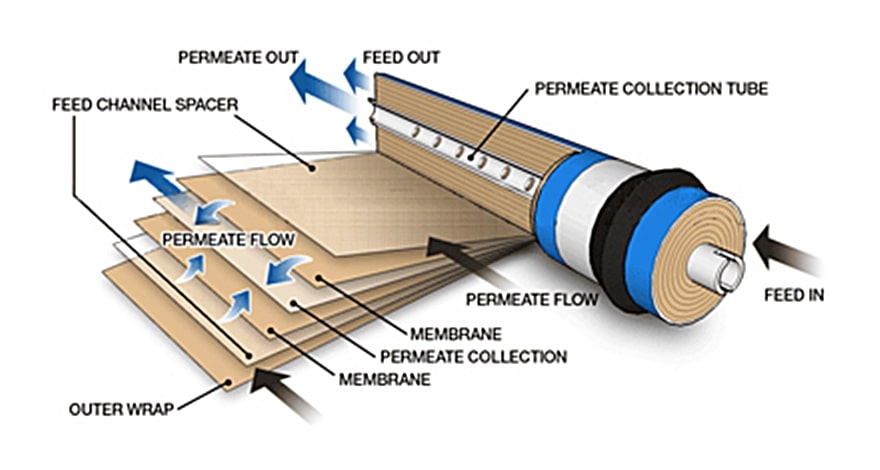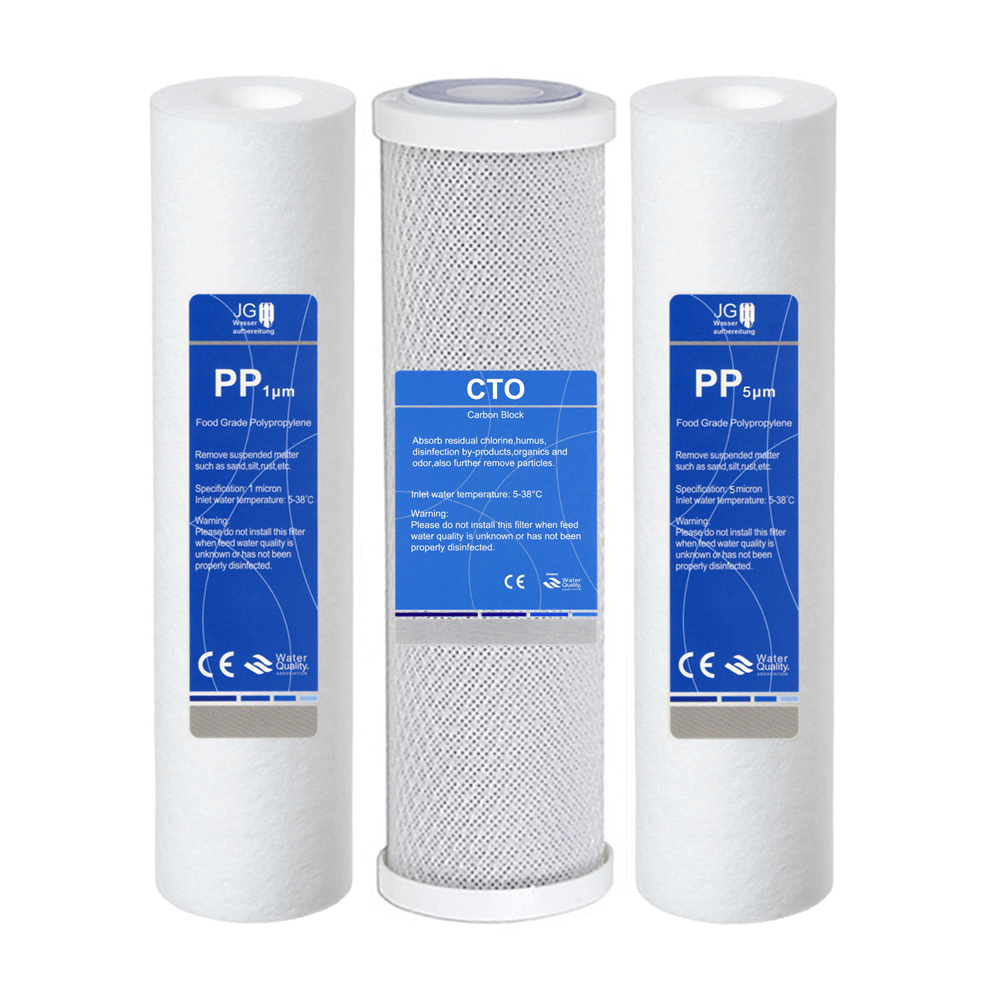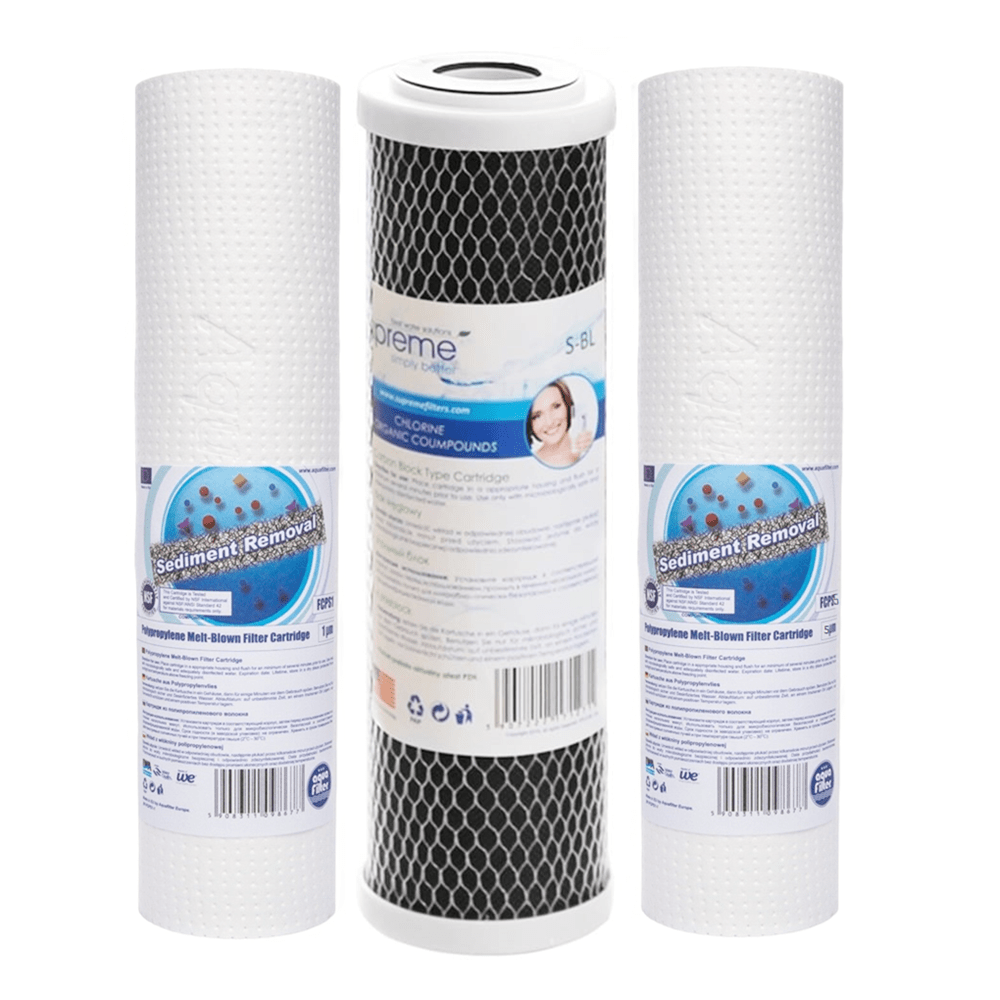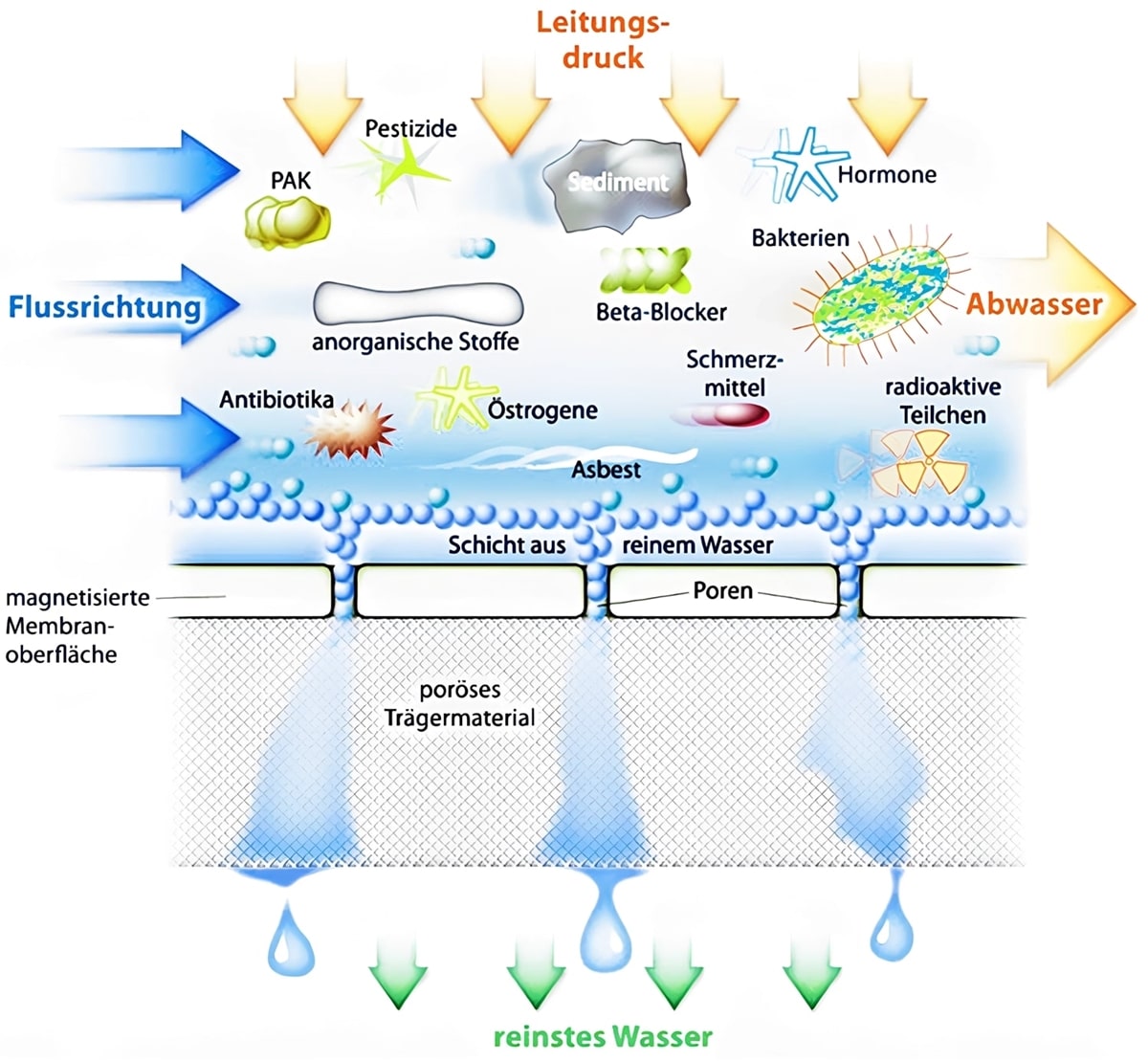How does reverse osmosis work
Reverse osmosis is a water filtration process based on the principle of osmosis. Here are the basic steps of how reverse osmosis works:
Osmosis: First, it's important to understand what osmosis is. In osmosis, water molecules move through a semipermeable membrane from a solution with a lower concentration of solutes (e.g., salts) to a solution with a higher concentration to reach equilibrium.
Reverse osmosis: In reverse osmosis, this natural process is reversed. By applying pressure to the concentrated solution (e.g., tap water), the water is forced through the semipermeable membrane. This membrane allows only water molecules to pass through, trapping larger molecules, ions, and contaminants (such as heavy metals, salts, bacteria, and other pollutants).
Filtration: The water that passes through the membrane is called "purified water" or "permeate." The water that does not pass through the membrane is called "concentrate" or "effluent" and contains the trapped contaminants.
Post-treatment: After reverse osmosis, the purified water is often passed through additional filters (e.g. activated carbon filters) to improve taste and odor.
Storage: The filtered water is stored in a water tank from where it can be drawn when needed.
Reverse osmosis is an effective method for producing pure water free from many contaminants and is widely used in households, industry, and aquariums. If you have any further questions or would like more details, I'm happy to help!
The principle of reverse osmosis has been the best and most cost-effective method for producing pure and healthy osmosis water for over 60 years. For decades, the principle of reverse osmosis has been successfully used wherever pure water is needed, such as in medicine, pharmaceuticals, the food industry, on ships and in space travel, etc. Below, we explain the function of the reverse osmosis membrane.
Technology you can trust
Water treatment, pre-filtration in osmosis systems
The tap water (raw water) is treated in the pre-filter system. The 5µm sediment filter (1st stage) removes coarse particles such as sand, rust, limescale, suspended matter, etc. The 5µm activated carbon block filter (2nd stage) removes chlorine and organic contaminants. It also filters out suspended and flavored substances and organic contaminants dissolved in the water. The 1µm sediment filter (3rd stage) removes particularly fine particles and suspended matter and protects the membrane from any activated carbon dust that may be present. Depending on the system and requirements, other pre-filters can also be combined and used.
Reverse osmosis membrane technology
Filtration in the pre-filter system increases the purification level in the subsequent membrane filtration technology (4th stage) and extends the lifespan of the membrane. The tap water (raw water) is pressed against a synthetic, semi-permeable membrane with a pore size of only 0.0001 µm, which is permeable only to water molecules and not to impurities in the tap water (raw water). Therefore, only clean, pure water collects on the other side of the membrane. The impurities are flushed away and drained directly into the drain. The pressure of the tap water is sufficient to force the water through the membrane. The membrane is the heart of a reverse osmosis system. This removes almost all harmful substances and flavors, such as bacteria, viruses, germs, hormones, antibiotics, drug residues, pesticides, herbicides, fungicides, lead, arsenic, sulfur, lime, radioactive substances, nitrate and almost all other harmful substances.
The retention rates of various substances in a TFC membrane (plastic) made of polyamide-polysulfone (measured by electrical conductivity)
All molecules larger than the 0.0001µm water molecule are retained by the reverse osmosis membrane. The larger the molecule, the better it can be removed from the water. Heavy metals, for example, have a very high retention rate due to their size. Complex molecular structures such as hormones, viruses, drug residues, etc., are almost completely removed from the water. X-ray contrast media, if used in the form of an aqueous suspension of barium sulfate (BaSO4) (water-insoluble), or as iodine in the form of a triiodinated benzene ring (water-soluble, ionic/non-ionic), or in an oily (water-insoluble) compound, are also almost completely removed from the water.
Post-filtering
All of our reverse osmosis systems are equipped with an activated carbon post-filter or (activated carbon post-filter & combination filter), which filters the purified water again before use and ensures a pleasant and neutral taste.
Activated carbon post-filter
-
Example product title
Regular price 19,99€Regular priceUnit price per -
Example product title
Regular price 19,99€Regular priceUnit price per -
Example product title
Regular price 19,99€Regular priceUnit price per -
Example product title
Regular price 19,99€Regular priceUnit price per
Mineralization / Vitalization
Optionally, any reverse osmosis system can be upgraded with a mineral filter, energizing filter, or vitalizing filter. Depending on the selection, these contain one or more filter media with different compositions. These create agitation in the water. Depending on the type of filter, the water is mineralized, energized, or vitalized. Trace minerals are added, significantly improving the water density, ionization, conductivity, surface tension, and, above all, the pH value. The water acquires a natural and invigorating taste. Here are some sample post-filters:
Dependencies for osmosis water performance
The maximum performance of a reverse osmosis membrane is specified at approximately 20°C. At lower water temperatures, the purified water (osmosis water) performance decreases. This occurs, for example, in the winter months. For every 1°C lower than 20°C, the purified water performance decreases by 4%. The membrane fabric contracts at low temperatures, allowing less purified water (osmosis water) to pass through. This can increase the amount of wastewater. The purified water quality is improved at lower water temperatures.
Test your water with a TDS meter
We recommend our TDS meter. This device allows you to measure conductivity. It measures the total dissolved solids (mobile ions, including minerals, salts, and metals) in a specific volume of water, expressed in mg per volume of water (mg/L), also known as particles per million (ppm). Filtered water has an optimal concentration of approximately 10-20 ppm. If the concentration exceeds 60 ppm, the filters should be replaced. For comparison, normal tap water has a conductivity of approximately 200-500 ppm and higher.
measuring instruments
-
Example product title
Regular price 19,99€Regular priceUnit price per -
Example product title
Regular price 19,99€Regular priceUnit price per -
Example product title
Regular price 19,99€Regular priceUnit price per -
Example product title
Regular price 19,99€Regular priceUnit price per




